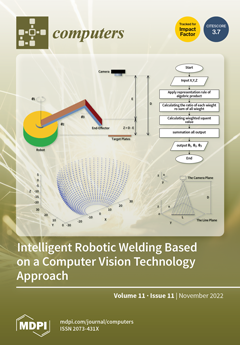Business organizations experience cut-throat competition in the e-commerce era, where a smart organization needs to come up with faster innovative ideas to enjoy competitive advantages. A smart user decides from the review information of an online product. Data-driven smart machine learning applications use
[...] Read more.
Business organizations experience cut-throat competition in the e-commerce era, where a smart organization needs to come up with faster innovative ideas to enjoy competitive advantages. A smart user decides from the review information of an online product. Data-driven smart machine learning applications use real data to support immediate decision making. Web scraping technologies support supplying sufficient relevant and up-to-date well-structured data from unstructured data sources like websites. Machine learning applications generate models for in-depth data analysis and decision making. The Internet Movie Database (IMDB) is one of the largest movie databases on the internet. IMDB movie information is applied for statistical analysis, sentiment classification, genre-based clustering, and rating-based clustering with respect to movie release year, budget, etc., for repository dataset. This paper presents a novel clustering model with respect to two different rating systems of IMDB movie data. This work contributes to the three areas: (i) the “grey area” of web scraping to extract data for research purposes; (ii) statistical analysis to correlate required data fields and understanding purposes of implementation machine learning, (iii) k-means clustering is applied for movie critics rank (
Metascore) and users’ star rank (
Rating). Different python libraries are used for web data scraping, data analysis, data visualization, and k-means clustering application. Only 42.4% of records were accepted from the extracted dataset for research purposes after cleaning. Statistical analysis showed that votes, ratings,
Metascore have a linear relationship, while random characteristics are observed for income of the movie. On the other hand, experts’ feedback (
Metascore) and customers’ feedback (
Rating) are negatively correlated (−0.0384) due to the biasness of additional features like genre, actors, budget, etc. Both rankings have a nonlinear relationship with the income of the movies. Six optimal clusters were selected by elbow technique and the calculated silhouette score is 0.4926 for the proposed k-means clustering model and we found that only one cluster is in the logical relationship of two rankings systems.
Full article





